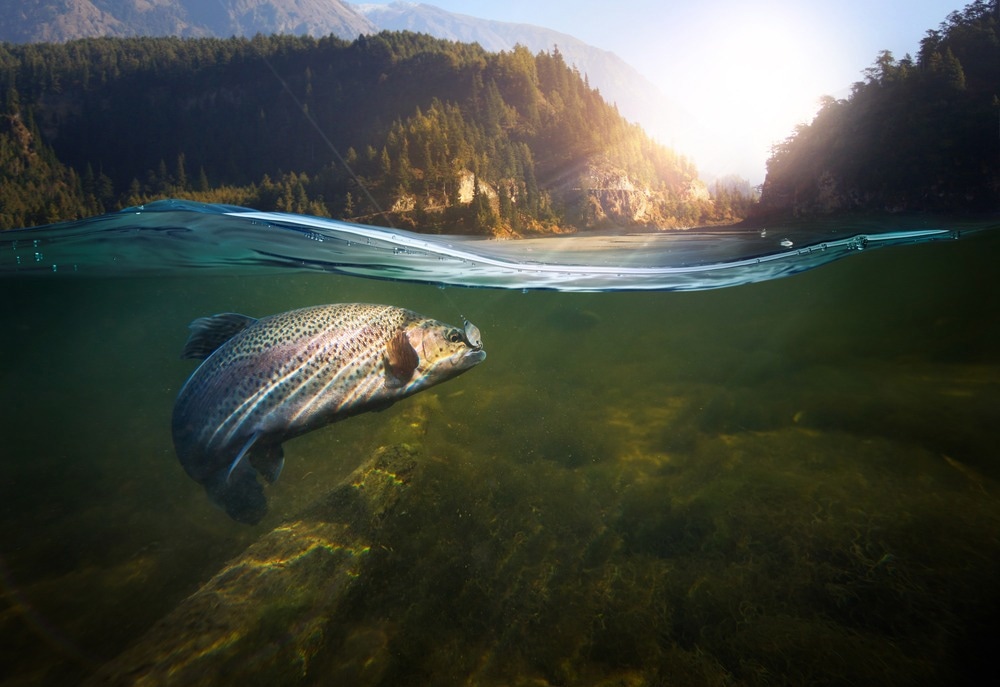Frontiers in Marine Science released the first results of a novel salmon population monitoring tool developed by scientists and natural resource managers from Canadian First Nations, governments, academic institutions, and conservation groups. “Salmon Vision,” a game-changing new technology, merges artificial intelligence with age-old fishing weir technology. Early evaluations reveal that it is exceptionally effective at detecting and counting fish species, possibly allowing managers of fisheries to monitor salmon populations in real time.

Image Credit: Rocksweeper/Shutterstock.com
In recent years, we have seen the promise of underwater video technology to help us literally see salmon return to rivers. That dovetails with what many of our First Nations partners are telling us: that we need to automate fish counting to make informed decisions while salmon are still running.
Dr. Will Atlas, Study Lead Author and Senior Watershed Scientist, Wild Salmon Center
The Salmon Vision study annotates over 500,000 individual video frames collected at two Indigenous-run fish counting weirs on B.C.’s Central Coast's Kitwanga and Bear Rivers.
Developed in data conjunction with the Gitanyow Fisheries Authority and Skeena Fisheries Commission, the first-of-its-kind deep learning computer model demonstrates promising accuracy in recognizing salmon species.
When tracking 12 different fish species through custom fish-counting boxes at the two weirs, it produced mean average precision rates of 67.6%. For coho and sockeye salmon, two of the main fish species targeted by First Nations, commercial, and recreational fishers, the results exceeded 90% and 80%, respectively.
When we envisioned providing fast grants for projects focused on Indigenous futurism and climate resilience, this is the type of project that we hoped would come our way.
Dr Keolu Fox, Professor, University of California-San Diego
The Pacific Salmon Foundation, Gitanyow Fisheries Authority, Skeena Fisheries Commission, researchers, and fisheries managers from Simon Fraser University and Douglas College computing sciences collaborated on the model, which was funded by the British Columbia Salmon Recovery and Innovation Fund.
The next stage is to extend the model into six other watersheds on the North and Central Coasts of British Columbia in collaboration with partner First Nations, in light of these promising first results.
On several fronts, having real-time data on salmon returns is essential. Dr Atlas claims that there has not been much data available for many British Columbian fisheries for decades. Therefore, rather than using the actual quantity of salmon returning, managers of fisheries must base harvest figures on early-season capture statistics.
The hazards of overfishing already vulnerable populations are exacerbated by the more erratic salmon returns caused by shifting weather patterns, stream flows, and ocean conditions.
Dr. Atlas noted, “Without real-time data on salmon returns, it is extremely difficult to build climate-smart, responsive fisheries. Salmon Vision data collection and analysis can fill that information gap.”
He stated that this tool will be of immeasurable use to First Nation fisheries managers and other organizations, both in remote rivers throughout the salmon country where on-the-ground data collection is difficult and expensive and at the decision-making table, where it will provide better information to manage conservation risks and fishing opportunities.
In 2023, the Salmon Vision team is testing automated counting in several rivers throughout the North and Central Coasts of British Columbia. By 2024, it is hoped to have trustworthy real-time count data available.
Journal Reference
Atlas, W. I., et al. (2023) Wild salmon enumeration and monitoring using deep learning empowered detection and tracking. Frontiers in Marine Science. doi:10.3389/fmars.2023.1200408